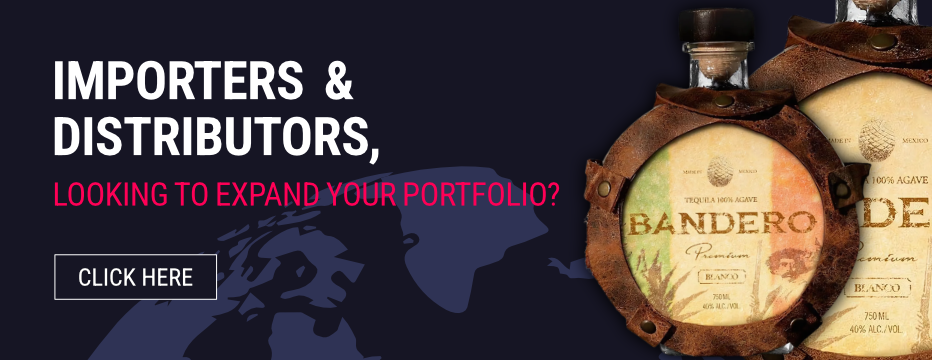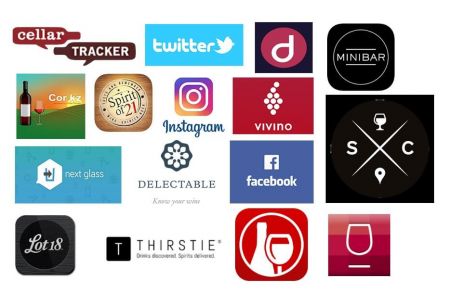Sommeliers Choice Awards 2024 Winners
What to Do—and What Not to Do—On a Successful Sales Call
Whether your portfolio is small or large, your success will rest on your ability to build a strong relationship with your customer that adds value to their business. With this goal, there are some good concepts to follow.

Today, in the wine and spirits trade, whether you’re working in a dense, urban market teeming with competitors, or a sparse suburban market with only a handful of competitive vendors, the basic challenge is the same. Every year, there are more and more small importers and distributors, many with offerings of solidly high quality products. Many of these “little guys” are finding ways to incorporate a range of suppliers from across regions, countries and continents to avoid representing only a niche. Alternatively, the large, regional or national importers and distributors seem to constantly feed expanding portfolios, and for sheer heft of book and variety of suppliers, it’s difficult to penetrate their growing sense of importance to the customer.
Whether your portfolio is small or large, your success will rest on your ability to build a strong relationship with your customer that adds value to their business. With this goal, there are some good concepts to follow.
1. Develop a Strong Customer Profile and Your Story
DO: To supplement the products you choose to show on a sales call, you must craft “a story” of how your products relate to the program in place at the customer.
A successful sales call begins well before you actually meet your customer, open bottles and hear their impressions. If possible, you should visit the store or the restaurant and get a good idea of what’s on the shelf or on the list. If you cannot visit the “bricks and mortar” location, a store or restaurant website will contains a current wine list or e-commerce site where you can see an updated list of products offered. Often, print and web publications contain content (blogs, interviews, articles, customer reviews) about your customer’s shop or restaurant that will indicate the buyer’s likes and dislikes, and what their aim is with their shop offerings or list selections.
The product choices that have been excluded will reveal as much about the buyer’s intentions as those that are included. Determine the “DNA” of the store or restaurant, the “fingerprint” or “identity” that the buyer wants to communicate.
1. Is the shop a showcase for “natural,” “orange” or “wine geek” wines?
2. Is the shop strictly interested in artisanal wines that are sustainable, organic or Biodynamic?
3. Does the store sell only big brands? Does the wine director include a manifesto or mission statement on their wine list?
4. Does the restaurant feature a hip, trendy mixologist who makes his or her own cocktail ingredients by hand?
5. Does the restaurant have a long list of single-malt scotch or single-barrel bourbon?
What are the various channels used by the store or restaurant to market to their customers (websites, newsletters, mailing lists, printed POS materials), what content is published on these, and what events (tastings, wine dinners, classes, seminars) are happening?
More than loose ideas in your head, your customer profile should be documented so that it’s accessible on your smartphone. You should learn your customer’s profile to the degree that, when you’re shown a new product at a company sales meeting, you’ll immediately think of good prospects in your account run. Your customer profile should contain a list of the kind of products you suspect they’ll like. Nothing helps sell wines and spirits better than a good story.
DON’T: Go into a sales call “cold,” without a customer profile or a story that speaks to it.
2. Be Professional
DO: Dress and behave like a positive, upbeat and creative professional.
The obvious parts about being professional need no further discussion, yet are frequently ignored by sales rep’s who don’t get a sale... Imagine that during your sales call, you can be pulled into a meeting with your customer’s CEO, who requests your opinion on a serious, new challenge to their business. At all times, your appearance, demeanor and thoughts should reflect well on your customer, yourself and your company. If you can help your customer solve problems, you help add value to their business. There’s a very good chance you’ll get an order. Be more than punctual. Get to your appointment early so that if anything unexpected happens with the appointment, you end up waiting a bit, never your customer. In the best scenario, your customer has a healthy, thriving business to look after, with issues and decisions that require last-minute attention. Give your customer the benefit of the doubt. This waiting time can be useful to gather valuable information for your customer profiles.
DON’T: Show up late or make your customer wait.
3. Be Focused, Sell Your Story, Listen and Take Notes
DO: Respect your customer’s time.
At a bustling retail shop or hot restaurant, your buyer is a very busy person. Store and restaurant staffs are lean at many businesses, so it’s likely that buying wines and spirits is just one of the many tasks your customer must juggle on any given day. In a wine store, often the person stocking the shelves is the one who also helps customers on the floor, answers the phone, sends email replies, rings up purchases, accepts deliveries, etc. If it’s a smaller shop or not a peak time of day, sometimes this person is the manager. Sometimes the manager is the owner. In a restaurant, the buyer has a similarly long list of tasks to complete before lunch or dinner service.
Treat your customer’s time like the precious resource that it is. Once spent, it is gone forever, so think of it as you would yours… Bring 3-6 items to show and conceive of your meeting as 15-30 minutes long. Buyers frequently schedule multiple salespeople on the same day. Make sure your bottles help you tell your story, or, how your items compliment your customer’s business. Some salespeople have fully mastered only half the art of conversation. Listening reveals a wealth of information. What your customer says will indicate if you need to vary your pitch so that it will resonate. Some customers delight in technical details; others don’t care one whit and want only to taste your products. Gather data and ideas to inform your story so that it helps you and your customer sell.
DON’T: Meet and present without listening.
4. Problem Accounts
DO: After evaluating your accounts, be efficient and pro-active.
There are some selfish, inconsiderate, egomaniacal customers in the world. Thankfully, the wine and spirits trade is Darwinian in that most successful owners, buyers and managers have superior people skills. Invariably, these people are in the business because they are genuinely nice, they like people, and they enjoy giving their guests and customers a pleasurable experience. Carefully evaluate your account run and edit accordingly, if necessary. If you have accounts that don’t value your time, say, if you’ve had numerous meetings over some months with no sales, then replace these with new accounts.
You cannot afford to waste your time, your single most valuable resource. A dynamic, continuous, gradual process of refreshing accounts and regenerating your business is constant. Strive to be fluid, flexible and adept at managing change. Create and nurture healthy relationships that thrive on positive possibilities. If you have a “river” of consistent business, if you will, it won’t be necessary to chase huge, single, one-off orders. A number of healthy, on-going customer relationships will keep the “water” flowing. The orders will take care of themselves.
DON’T: Waste time on unproductive accounts.














